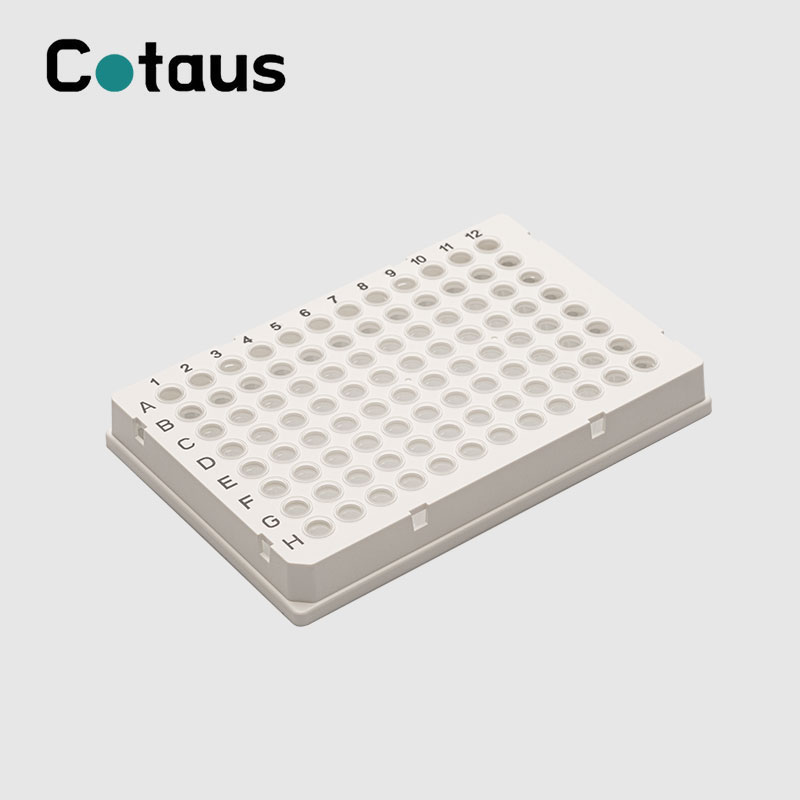Enhancing Functionality and Ease of Use: The Double-Color Design of PCR Plates
2024-07-18
In the realm of molecular biology and genetic research, PCR (Polymerase Chain Reaction) plates are indispensable tools. Among the various designs available, the 96 Well 0.2ml Double Colour Full Skirt PCR Plate stands out due to its innovative double-color design. This unique feature significantly enhances both the functionality and ease of use of the PCR plate, providing numerous benefits for researchers. In this blog, we will explore how the double-color design of the PCR plate contributes to improved laboratory efficiency and accuracy.
1. Simplified Well Identification
One of the primary advantages of the double-color design is the simplification of well identification. Traditional PCR plates, typically monochromatic, can make it challenging to quickly locate specific wells, especially during high-throughput experiments. The double-color design addresses this issue by alternating colors between wells or rows, providing a visual guide that makes it easier for researchers to identify and access the correct wells quickly. This reduces the risk of errors, such as pipetting into the wrong well, and enhances overall workflow efficiency.
2. Enhanced Organization
The use of two colors helps in organizing samples and reactions more effectively. Researchers often need to run multiple samples or different experimental conditions in parallel. The double-color design allows for clear demarcation of sample groups, making it easier to organize and manage different sets of reactions within the same plate. This visual separation is particularly beneficial in complex experimental setups, reducing confusion and streamlining the process of sample management.
3. Improved Accuracy and Precision
Accurate pipetting is crucial in PCR experiments to ensure reliable results. The double-color design aids in precise pipetting by providing a clear visual reference. Researchers can quickly orient themselves to the correct wells, minimizing the chances of cross-contamination or accidental misplacement of reagents. This increased accuracy is vital for reproducibility and consistency in PCR results, especially in high-stakes applications such as clinical diagnostics and genetic research.
4. Reduced Eye Strain and Fatigue
Laboratory work often involves long hours of meticulous pipetting and monitoring of experiments. The double-color design helps reduce eye strain and fatigue by providing a more visually engaging and less monotonous workspace. The alternating colors break the visual uniformity, making it easier for researchers to maintain focus and concentration over extended periods. This ergonomic benefit contributes to improved performance and reduced errors during experimental procedures.
5. Facilitated Data Interpretation
Post-PCR data analysis can be complex, involving the interpretation of results from multiple wells. The double-color design aids in this process by allowing researchers to quickly correlate specific wells with their corresponding data points. The visual differentiation simplifies the identification of patterns, anomalies, or trends in the results, facilitating more efficient data analysis and interpretation. This is particularly advantageous in high-throughput settings where large volumes of data need to be processed and reviewed.
6. Increased Versatility
The double-color design enhances the versatility of the PCR plate, making it suitable for a wide range of applications. Whether it’s gene expression analysis, genotyping, or pathogen detection, the improved organization and ease of use provided by the double-color design make the PCR plate adaptable to various experimental needs. This flexibility is invaluable in research environments where different types of PCR assays are frequently conducted.
Conclusion
The double-color design of the 96 Well 0.2ml Double Colour Full Skirt PCR Plate represents a significant advancement in laboratory tools, offering numerous benefits that enhance functionality and ease of use. By simplifying well identification, improving organization, increasing accuracy and precision, reducing eye strain, facilitating data interpretation, and increasing versatility, this innovative design addresses many of the challenges faced by researchers in PCR experiments. As a result, it contributes to more efficient, reliable, and productive laboratory workflows, ultimately advancing the field of molecular biology and genetic research.



